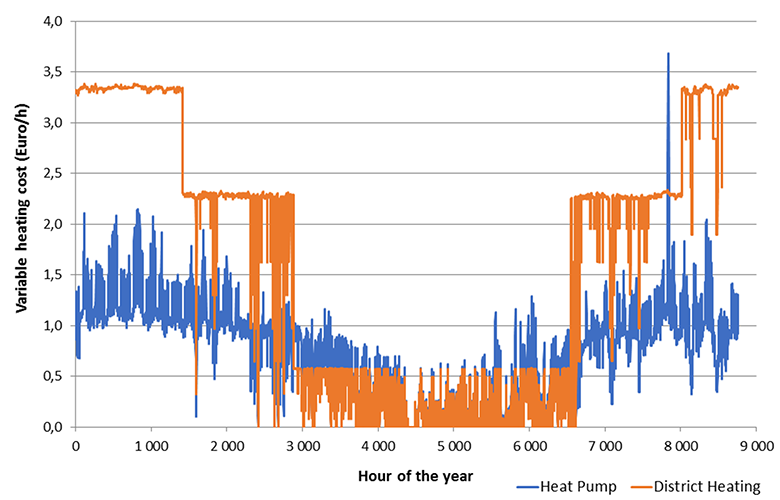In the Swedish research project Heat Pumps in District Heating Systems, founded by the Swedish Energy Agency, new combinations of heat pumps and district heating systems have been investigated.
In three sub-projects new possibilities have been explored for combining heat pumps and district heating. The project looked into the combination of heat pumps and district hearting in the manufacturing industry, hybrid heat pumps that can alternate between heat pumps and district heating depending on the energy prices and the combination of low temperature district heating and heat pumps for production of domestic hot water (DHW).
Benefits for house owners
In facilities and multifamily houses in Sweden with an installed heat pump there are often, for historical reasons, also a connection to district heating, and when needed district heating is often used as auxiliary heat. For the house owner it would be a benefit if it was possible to alternate between the two alternatives of heating depending on the lowest cost. This could also be used to reduce greenhouse gas emissions by using electricity or district heating when the share of renewables is high in each grid.
In a future smart grid, it would be a benefit to have the possibility to alter the technology for the heat production based on the demand and supply for electricity and district heating at the moment. Here a hybrid heat pump increases the flexibility.
Calculating costs
Within the project an algorithm was developed, calculating the variable cost related to the choice of heat pump or district heating, depending on current operating conditions and energy prices, as well as selecting the energy production with the lowest hourly cost. The algorithm has been tested in a case study based on data from a multi-family house in Linköping, Sweden, with both district heating and an exhaust air heat pump installed. The results shows that the algorithm will mainly choose the heat pump during the autumn, winter and spring, while district heating dominates in the summer. The main reason is the seasonal energy prices for district heating in Linköping, with low prices during the summer month and higher during the rest of the year.
For more information about the algorithm developed and the case study in Linköping you can read “Hybrid Heat Pumps in Combination with District Heating” by Markus Lindahl, Ola Gustafsson, Caroline Markusson and Caroline Haglund Stignor.


